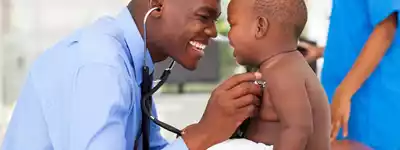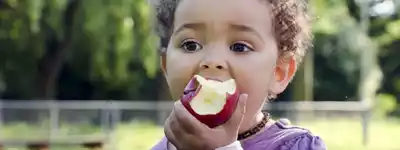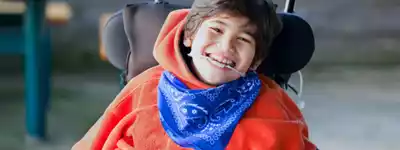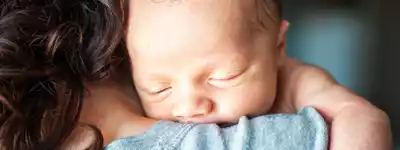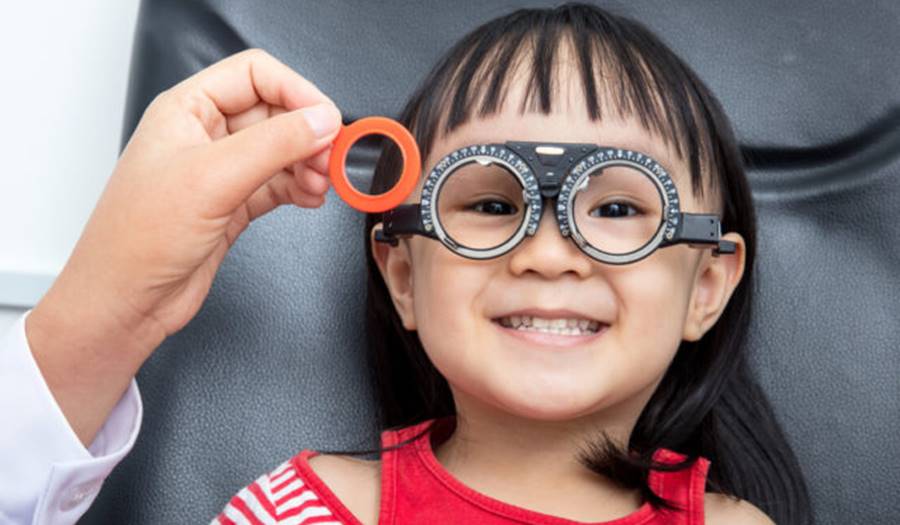
Common Vision And Eye Conditions
8/2/2021

Vision is our ability to see and starts to develop in utero. Vision is the result of our eyes converting light into electrical signals called nerve impulses. These nerve impulses create an image of our surroundings. Vision develops over time but there are common eye conditions that can affect vision as well as the health of our eyes.
VISION DEVELOPMENT
Vision starts to develop in the womb and continues through adolescence with most of the maturation occurring from 0-6 years of age. During this time, changes to normal vision development are the most likely to cause damages to vision. Therefore, it is important to have regular vision screens as well as be familiar normal vision developmental milestones and red flags.
Is the pandemic weighing on our children?
RECOMMENDED SCREENING
Your infant’s eye will be examined at birth and all physical exams throughout childhood. We recommend vision screens between 9 months and 1 year, then yearly until age 6. After age 6 many schools will conduct vision screens every other year. We recommend vision screening in our office on the years it is not done at school (generally, these are the “even years”).
Before age 6 the vision screen will be done with a photo device. After age 6, the screen will be done with a Snellen chart (the charge with letters). These tests are vision screens. Vision screens are NOT comprehensive eye exams and are used to identify children who may have vision issues. Children may not report any symptoms of vision loss or blurriness as they may not be able to identify anything as being abnormal or wrong. If any abnormality or red flag is seen on a vision screen, discuss obtaining a comprehensive eye exam with your provider.
VISION DEVELOPMENT
Newborns to 9 months
Infants do not have binocular vision (meaning using both eyes together) until 4 months. This is the first big development we see in vision. They are also working on using both eyes to track and object. They see best 8-10 inches from their face. They also develop color vision during this time. At first, they see high contrast colors better but by 5 months we believe they have full color vision and can differentiate between more subtle color changes. They are also just starting to develop depth perception at the end of this age range.
To help vision develop at this age, keep toys about 8-10 inches from their face, not too close but not too far. Make sure to change their position frequently, allow them to face out when walking around, and alternate sides when feeding your child to help build the eye muscles evenly. As your child because more mobile, make sure they can spend lots of time on the floor both on their back, sides, and doing tummy time. Offer objects they can reach out to grab, kick, or pull. Also offer your child toys to hold and explore with both their hands, mouth, and eyes.
If your baby is unable to follow or track and object by 3 months or their eyes continue to cross after 4 months of age, please discuss with your provider.
9 months to 2 years
Children have depth perception by this age and can usually judge distances well. Their hand eye coordination continues to develop. Encouraging crawling, climbing, and hide and seek games. Play with books, blocks, and balls all help vision develop.
You may note your child misjudges distance for picking up object that doesn’t improve as they advance fine and gross motor skills. They may not be able to judge a depth or distance which can be subtle and not noticeable or may prevent your child from crawling or walking.
2 years to 5 years
Toddlers and Preschoolers are approaching perfect 20/20 vision. They continue to work on hand-eye coordination. You can help facilitate this through play with puzzles, blocks, and crafts such as coloring, painting, chalk, cutting, and pasting. Outdoor play including throwing and catching are also important play for vision development.
If your child’s vision is not typically developing you may notice an eye that is crossed or turns out. A child may also rub at eyes, have light sensitivity. You may notice poor focusing or poor tracking which can look like clumsiness or frequent falls. They may not be able to identify an object in the distance.
School Age
School age children should have 20/20 vision. School age children rely on their vision for reading and writing as well as computer work. If they are having vision issues, they may have trouble reading or may be unable to see the board at school clearly. They may sit close to the television or hold a book very close to their face when reading. They may have a hard time judging distance when picking up an object or may appear clumsy. They may close one eye to look at things. They may also complain of headaches, dizziness, or eye strain.

RECOMMENDED SCREENING
When vision is not 20/20 or your child is having vision issues, there are a few common culprits including myopia, hyperopia, and astigmatism. Other common eye issues include strabismus, amblyopia, and pseudo-strabismus.
Myopia
Myopia is also called nearsightedness. It causes distant objects to be blurred but a person can still see clearly up close. In myopia, the eyeball is too long (front to back) or the corner (the clear window at the front of the eye) is curved too steeply.
Generally, myopia is diagnosed between ages 6 and 14 years of age but can be diagnosed earlier. Myopia affects 4% of preschool aged children, 9% of school aged children, and 30% of teens. A child is more likely to have myopia if a parent is also affected. We are seeing increased rates of myopia in children and although they are not 100% sure, they believe the cause is an increase in screen time including computers, phones, and video games.
Children with myopia may complain of blurred vision, that they can’t see the board at school, or complain of headaches. They may rub their eyes or squint to see better. It may also be noted by failing a vision screen. A child is diagnosed by an optometrist or ophthalmologist during a comprehensive eye exam.
Children diagnosed with myopia may require glasses or contacts.
Hyperopia
Hyperopia, or farsightedness, results in a person who can see distance objects clearly but close objects need extra focus. In hyperopia, the eyeball is too short (front to back) or an abnormally shaped corner. Hyperopia is normal during childhood and is asymptomatic meaning it does NOT cause blurred vision or other issues. Over 95% of all infants have hyperopia but this drops to 12% by age 3 and 1% by age 15. This type of hyperopia improves as they grow and their eyes mature. Symptomatic Hyperopia causing blurred vision is rare before adolescence but climbs to a rate of 53% by age 60.
A person with hyperopia may squint to see nearby objects. They may have eye strain or headache after reading, writing, or using a computer for a long period of time. Diagnosis involves a comprehensive eye exam with an optometrist or ophthalmologist and treatment is generally glasses.

Astigmatism
Astigmatism is blurred vision due to an irregularly shaped cornea. It is common in infants with as many as 23% of children aged 6 to 12 months having an astigmatism. Family history of astigmatism, myopia, hyperopia, or prenatal smoke exposure can increase the risk of astigmatism. Most astigmatism should improve and resolve with age and only 9% of children have an astigmatism by age 6.
If your child has an astigmatism, they may rub their eyes, squint, close one eye to try to focus, or tilt their head to one side while reading, watching tv, or looking at you. They may also hold a book too close or try to sit close to the television.
Your child will be diagnosed by an optometrist or ophthalmologist during a comprehensive eye exam. If the astigmatism is large glasses will be required for correction to prevent amblyopia or worsening vision. A small astigmatism may not need any treatment. Your child may also just need correct with glasses while reading or doing schoolwork.
Strabismus, Amblyopia and Pseudo-strabismus
Strabismus is the term used for misaligned eyes. This means an eye or both eyes may drift upward, downward, inward, or outward. If untreated it can result in amblyopia or permanent vision loss. It can also cause diplopia or double vision. It is estimated that between 0.2-6.2% of children will be diagnoses with strabismus. Strabismus is diagnosed by an ophthalmologist and may require glasses, prisms, surgery, Botox injection to eye muscles, or eye patching.
Pseudo-strabismus is a condition in where their eyes looked cross but there is no true misalignment or vision issues. This can occur when a child has a wide nasal bridge or extra skin folds around the eyes.
Amblyopia is also known as a lazy eye. The eye becomes “lazy” because of strabismus or eye misalignment or significant differences in vision between eyes. Because the misalignment can cause double vision, the brain shuts down vision in the weaker eye. Because your body is not “using” that eye, the muscles don’t control that eye and it can drift inward. An ophthalmologist can make the diagnosis. Treatment includes glasses and sometimes surgery. It also includes patching or using drops over or in the stronger eye to encourage the weaker eye to work and increase vision.
CONGENITAL OR AQUIRED EYE CONDITIONS
Some eye conditions are present at birth or genetic. Others can be caused by trauma, medications, or infections. These eye conditions can result in decreased vision or permanent vision loss.
Glaucoma
Glaucoma is when the pressure in the eye is too high resulting in damage to the optic nerve. It can result in blindness. There are 3 types of pediatric glaucoma characterized by when it is diagnosed: congenital meaning is seen at birth, infantile, noted between 1-24 months, and juvenile, which is seen age 3 or later. Primary glaucoma has no known cause. Secondary glaucoma can be caused by genetic conditions, aniridia (malformed iris), chronic steroid use, trauma, or previous eye surgery.
Primary congenital glaucoma is rare but affects 1 in 10,000 newborns. Secondary glaucoma can occur with genetic conditions and other causes at varying rates. With any of these risk factors frequent surveillance and early detection are essential to maintain vision and eye health,
Symptoms of glaucoma can include extreme light sensitivity, watery discharge or frequent tearing, pain, an enlarged eye, or a cloudy corner. Surgery and sometimes medication is required to correct the pressure.
Cataracts
A cataract is the clouding of the lens of the eye. It is rare in babies and children, with only 20,000-40,000 cases a year, but if left untreated can result in blindness. Over 20% of all pediatric blindness is due to cataracts. Causes of cataracts include:
• Genetic abnormality (this is over 25% of all cases)
• Metabolic disorders
• Trauma
• Diabetes
• Poisoning
• Steroid use
• Rheumatoid arthritis
• Glaucoma
• Infections such as measles and rubella
• Drug reactions to medications such as tetracycline
• Prenatal infection including rubeola, chicken pox, cytomegalovirus (CMV), herpes simplex, herpes zoster (shingles), poliomyelitis, influenza, Epstein Barr virus, syphilis, or toxoplasmosis
Retinitis Pigmentosa (RP)
Retinitis Pigmentosa (RP) is a rare genetic eye disease that can cause vision loss. It is the most frequent form of inherited retinal degeneration affecting 1 in 4,000 children worldwide. The retina is composed of millions of light sensitive cells in the back of the eye. These cells convert light into electrical impulses and sends these impulses to the brain via the optic nerve. RP causes the retinal cells to breakdown and loss of these cells. RP can begin during childhood. Early signs are decreased night vision, the loss of parts of the visual field, difficulty seeing in low light. As it progresses it may cause tunnel vision, reduced visual acuity, and the loss of color vision. A child may trip often and appear clumsy. They may take a long time to adjust to changes in lighting or have a hard time with bright lights.
RP is diagnosed by an ophthalmologist. There is no known cure for RP though there are ongoing studies exploring treatments including gene therapy. Currently the goal is to maximize existing vision. This includes visual aids to magnify central vision and computer programs that read text. Portable lighting devices can help as well as mobility training with a guide dog or cane.
Diabetic Retinopathy
Retinopathy is blurred or distorted vision due to damage to the cells of the retina. This can result in permanent vision loss. Diabetic Retinopathy affects children who are diagnosed with Diabetes, both type 1 and type 2. Over 20% of children under the age of 18 years with Type 1 Diabetes and 10% of those with Type 2 Diabetes will show signs of retinopathy within 6 years of their diagnosis. Diabetes results in high blood glucose levels and this is what damages the retinal cells.
All children over the age of 12 should have regular screenings done by an ophthalmologist since symptoms are subtle until the damaged is advanced. If your child has poorly controlled diabetes, even if they are under the age of 12, they should be screened frequently.
Symptoms can include floating spots, blurred vision, dark or empty patches in the center of vision, trouble seeing at night, and impaired color vision. Treatment includes surgery, eye injections, and laser treatments,
Ptosis
Ptosis is the drooping of an eyelid due to weakness in the muscle that would elevate the eye lid. It can block the light that should enter the eye. This can result in an astigmatism causing blurriness and may cause amblyopia or vision loss. Ptosis can be congenital due to an underdeveloped muscle. It can also be acquired, though this is rare, due to a neurological condition or eyelid mass. Ptosis can be treated with surgery and this should be done if it is interfering with visual development. If it is not interfering with development, the surgery will often be delayed until the child is preschool age.
Epiphora
Epiphora is the term for tearing. Tearing is found in about 20% of newborns due to blocked tear ducts. Over 96% of these newborns will see the tearing resolve by 12 months of age. It can also occasionally occur in older children, usually between 6-12 months of age due to blocked tear ducts, allergies, or infections.
Management includes massaging the tear duct or eye drops. It may also require eye antibiotic ointment if it results in any green or yellow discharge. If it does not resolve by 12 months of age, often a procedure in where the tear ducts are probed with result in a cure. If it does not provide a cure there are other surgical procedures that can help.
GLASSES AND CONTACTS
TIPS FOR CHILDREN WEARING GLASSES
- Let your child pick out their own frames.
- Plastic frames are preferred for children under the age of 2
- An elastic strap can help babies and toddlers keep their glasses. Often their glasses slip off due to babies and toddlers having flat nasal bridges
- Spring hinged glasses are more durable for older children
- Polycarbonate lenses are better for children involved in sports as they are shatterproof
- Consider an insurance plan to help with the cost of replacement glasses if they are broken
TIPS FOR CHILDREN WEARING CONTACTS
There is no correct age to a child may start wearing contacts but most children wait until they are at least 10 years of age. A child who chooses to wear contacts should have glasses to wear when they need breaks from contacts or develop and eye infection. Contacts can be a better option for children playing sports.
How to tell if your child is ready for contacts:
- They tolerate eye drops
- They use good hand hugging which is important for preventing eye infections
- they are responsible and take care of their belongings
Yearly vision screens can help us identify children who may have vision issues. Early detection and treatment of congenital or developed eye conditions can result in improved vision and symptoms. If you suspect your child has vision or other issues with their eye health, please discuss with your provider.
Children’s Health Care of Newburyport, Massachusetts, and Haverhill, Massachusetts is a pediatric healthcare practice providing care for families across the North Shore, Merrimack Valley, southern New Hampshire, and the Seacoast regions. The Children’s Health Care team includes pediatricians and pediatric nurse practitioners who provide comprehensive pediatric health care for children, including newborns, toddlers, school-aged children, adolescents, and young adults. Our child-centered and family-focused approach covers preventative and urgent care, immunizations, and specialist referrals. Our services include an on-site pediatric nutritionist, special needs care coordinator, and social workers. We also have walk-in appointments available at all of our locations for acute sick visits. Please visit chcmass.com where you will find information about our pediatric doctors, nurse practitioners, as well as our hours and services.
Disclaimer: this health information is for educational purposes only. You, the reader, assume full responsibility for how you choose to use it.


